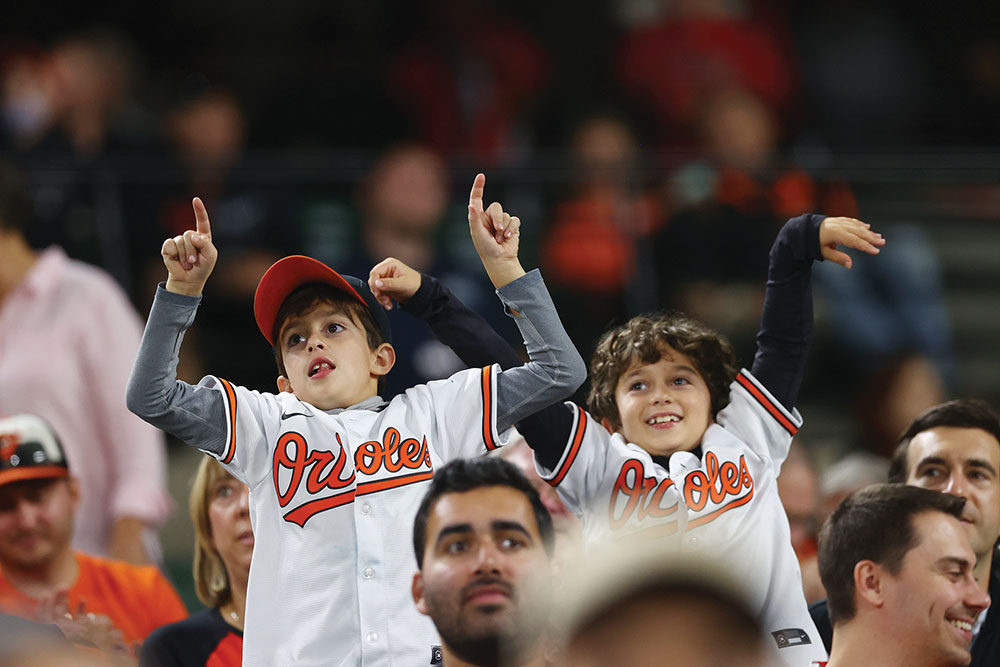This blog post originally ran in March 2018, but in light of recent events over the weekend, we here at Baltimore’s Child think this topic is still prevalent right now. A videotape that has circled many news and social media outlets over the weekend shows an encounter between a Native American man and a crowd of high school boys at the annual Indigenous Peoples March, among them are students from Covington Catholic High School in Kentucky.
As the man beat a ceremonial drum, the group were said to be surrounding him and “taunting” him. There have been many mixed opinions on this exchange, but the question remains, how do you guide your children to become a part of community leadership and activism? Resident columnist Lisa Robinson weighs in below.
Out of the mouths of babes came brave and demanding words from children under siege in their own school. The students who have been at the scenes of mass shootings are not assuming adults are going to make it better this time, and I am proud of them. It’s not just students from Marjory Stoneman Douglas High School in Florida, but students all over joining forces to say, “We want our leaders to actually do SOMETHING about gun violence in our country!”
And we, as adults, need to support their efforts.
 These students are our future leaders, consumers, parents, teachers and law enforcement officials. How can we support them? Encourage them to find their own voice and their own way for that voice to be heard.
These students are our future leaders, consumers, parents, teachers and law enforcement officials. How can we support them? Encourage them to find their own voice and their own way for that voice to be heard.
Do they want to protest? Do they want to participate in a march or walk-out at school? If your child wants to do this, have them do some research on how these protests have been done in the past. Talk about what they want to do and hope to accomplish. Make them understand the risks of their actions and how to prepare. For example, if a crowd gets out of hand, how do they protect themselves? Will there be repercussions if they walk out of school?
If they go to a protest, will you go with them? I would say, yes, go. You don’t have to participate, but you can go to make sure your child is safe. When Grace wanted to participate in a protest in Washington, D.C. when she was in high school, I let her go. She went with a friend and I went with them. I stayed neutral, because of my job. My purpose that day was to facilitate her in her desire to stand up for something she believed in. I walked with them without participating.
I have a friend who allowed her sons to go to a Black Lives Matter protest and went along with them. She also made sure their names were sewn into their T-shirts in case anything were to happen to them. That may seem extreme, but it’s what she was comfortable with.
When it comes to making protest signs, let them express themselves. But make sure they are not signs that will incite violence or strong reactions.
Also, have them talk about what they are experiencing as the protest unfolds and revisit it once you are back home. Talk about what you saw and heard, and how the experience made them feel. Discuss the experience in terms of your own family values. Often kids return feeling empowered and want to do it again. Remind them there are many ways to express their point of view. But their views should never be imposed on anyone else — for example, they shouldn’t pressure their peers to protest.
What other ways can teens voice their dissent? Expressing themselves on social media is tricky. Once again, there are consequences and a post could open them up to unwanted ridicule or to be singled out for retaliation. If they want to use that forum, be sure they check with you before they push send or publish.
Talk to your children about other types of protected free speech. The American Civil Liberties Union’s (ACLU) website reminds us that the First Amendment covers all forms of communication including music, theater, film and dance. The Constitution also protects actions that symbolically express a viewpoint. Examples of these symbolic forms of speech include wearing masks and costumes or holding a candlelight vigil.
However, symbolic acts and civil disobedience that involve illegal conduct may be outside the realm of constitutional protections and can sometimes lead to arrest and conviction. How do you explain the difference to your child? Try this: Sitting in a road may be expressing a political opinion, but the act of blocking traffic could be a crime.
Lastly, know your rights. The ACLU has an excellent rundown of this on their website. It’s a good read. Discuss it with your child.
Teaching our children to stand up and to express their beliefs is a good thing. As with all things in parenting, we just need to hold their hand part of the way.








